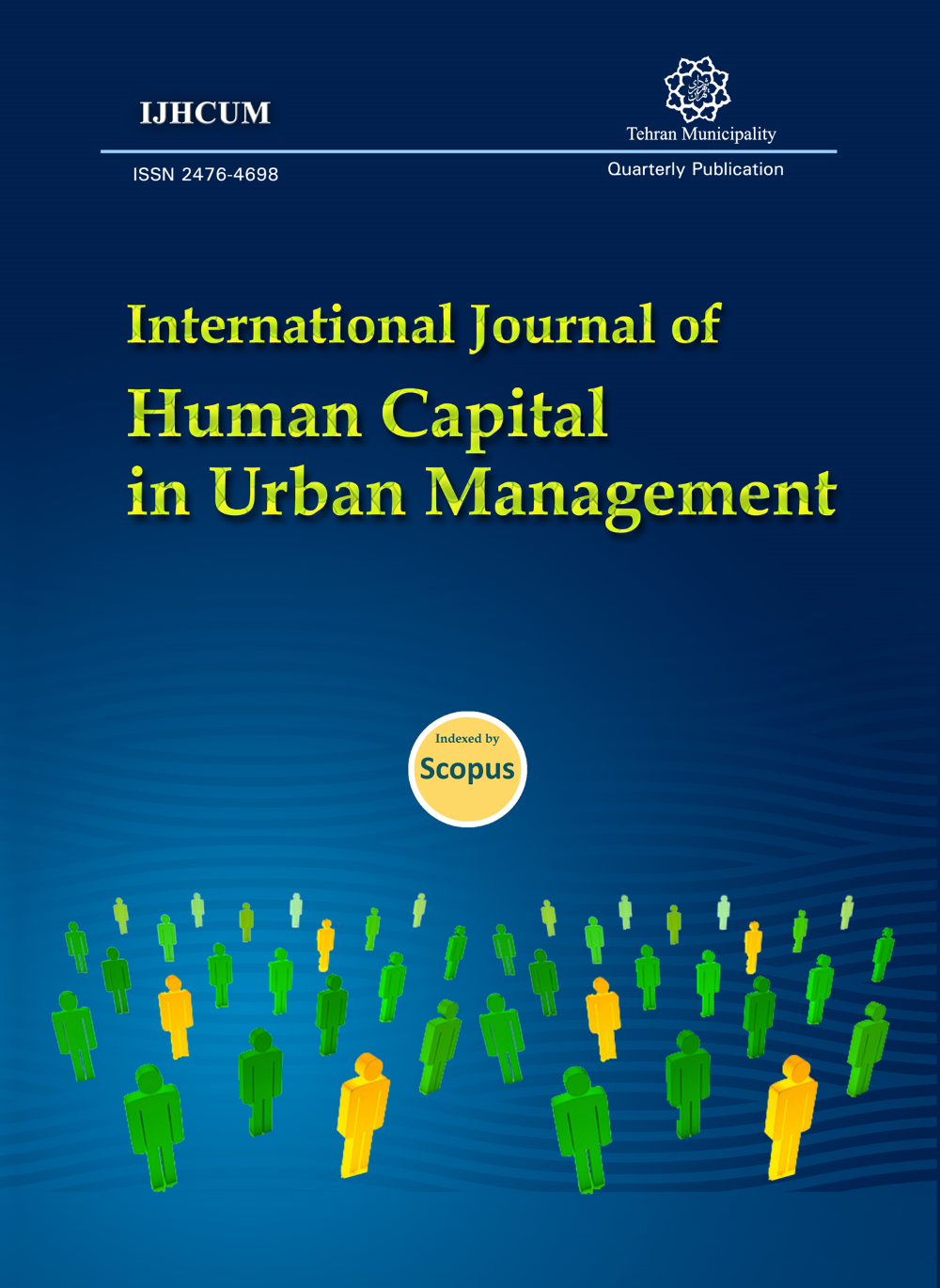Document Type : ORIGINAL RESEARCH ARTICLE
Authors
Department of Urbanism, Faculty of Architecture and Urbanism, South Tehran Branch, Islamic Azad University, Tehran, Iran
Abstract
BACKGROUND AND OBJECTIVES: The importance of integrated urban management has become increasingly evident in today's world, particularly for large cities facing physical, spatial, and demographic growth and complexity. In Iran, the lack of effective citizen participation and integrated management has posed a significant challenge to the urban management system. To address this issue, this research focuses on the role of citizens and urban activists in various levels of Tehran metropolis management, including policy making, planning, supervision, and control. It also evaluates the legislative and executive layers to emphasize their importance in achieving effective urban management.
METHODS: The present study adopts a qualitative research design, with a practical orientation in terms of its objectives, and an analytical-exploratory approach for data collection. The study focuses on experts and city managers as the statistical population of interest. To gather data, a questionnaire was developed and distributed among the target community. The reliability of the questionnaire was assessed using Cronbach's alpha coefficient, which yielded a high value of 0.97. Data analysis involved the use of descriptive statistics, including frequency, frequency percentage, mean, and standard deviation, as well as inferential statistics, specifically the one-sample t-test. The statistical analysis was conducted using the SPSS software package.
FINDINGS: According to the findings, 31.4% of the responses identified the citizens and 25.7% of the responses identified the municipality as the owner of the city. 68.6% of the answers have identified the municipality as the manager of Tehran city. Also, 80% of the respondents said that management fragmentation is the biggest challenge of urban development in Iran. The most influential institutions in the process of urban management are Tehran Municipality at the policy-making level, self-governing experts and researchers at the planning level, the Tehran Islamic Council at the monitoring and control level, the Islamic Council at the legislative level and Tehran Municipality at the executive level, while the citizens are the last.
CONCLUSION: The present urban management approach faces significant obstacles in the form of fragmentation and inadequate coordination among decision-making entities. These challenges result in disarray, duplication of efforts, and squandering of resources. Consequently, the absence of transparency and lucidity in the roles of city proprietors and managers, coupled with the lack of precise delineations for the engagement of organizations, individuals, and institutions in the urban management process, could impede the attainment of sustainable development objectives and curtail the capacity of civil society to comprehend and partake in effective urban governance.
Keywords
- City owner
- City manager
- Integrated urban management
- Fragmented urban management
- Citizen participation
Main Subjects
OPEN ACCESS
©2024 The author(s). This article is licensed under a Creative Commons Attribution 4.0 International License, which permits use, sharing, adaptation, distribution and reproduction in any medium or format, as long as you give appropriate credit to the original author(s) and the source, provide a link to the Creative Commons license, and indicate if changes were made. The images or other third-party material in this article are included in the article’s Creative Commons license, unless indicated otherwise in a credit line to the material. If material is not included in the article’s Creative Commons license and your intended use is not permitted by statutory regulation or exceeds the permitted use, you will need to obtain permission directly from the copyright holder. To view a copy of this license, visit:
http://creativecommons.org/licenses/by/4.0/
PUBLISHER NOTE
Tehran Urban Research and Planning Center Publisher remains neutral concerning jurisdictional claims in published maps and institutional affiliations.
CURRENT PUBLISHER
Tehran Urban Research and Planning Center: Tehran Municipality


Send comment about this article